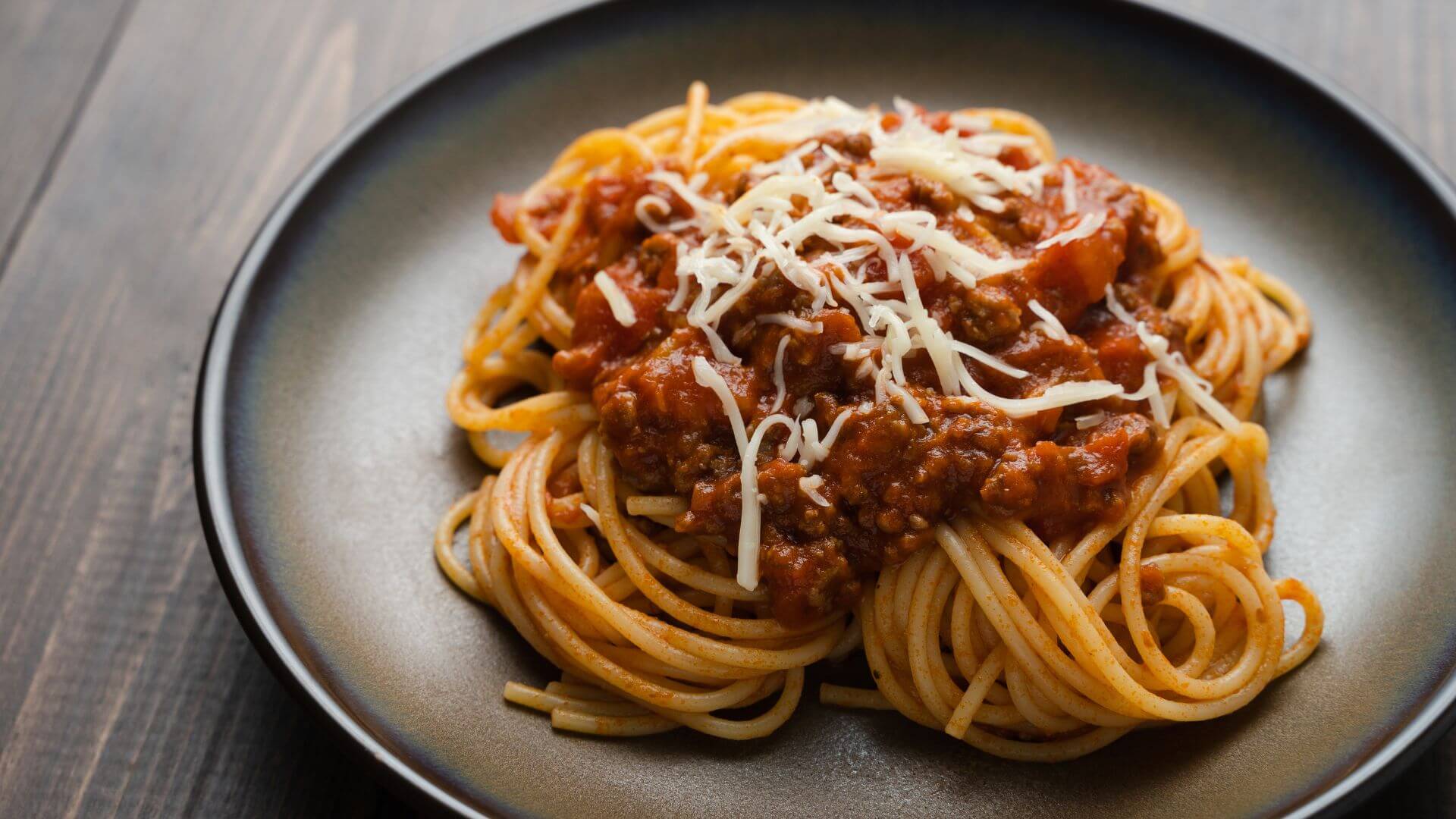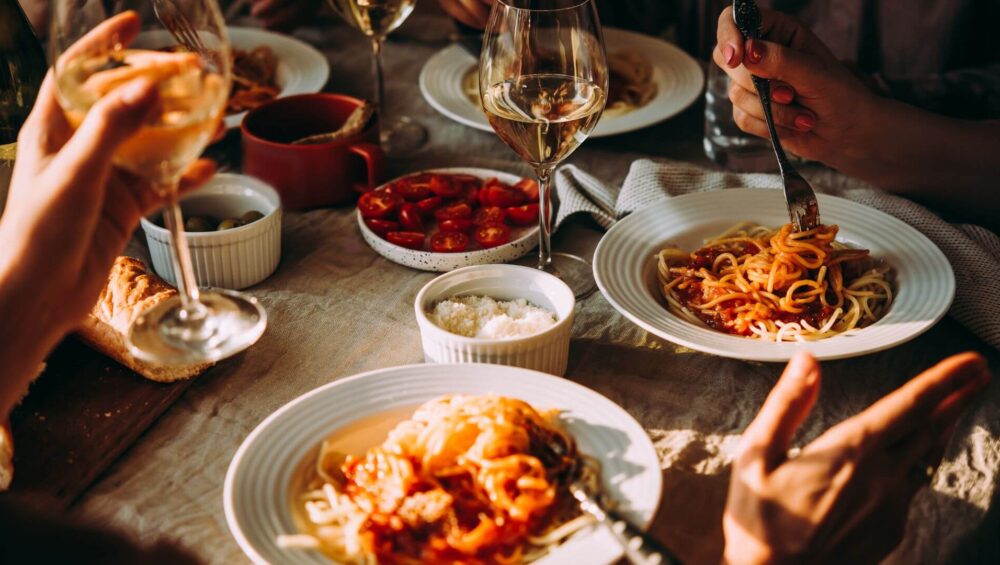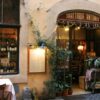It’s not a secret that one of the most compelling reasons why people from all over the world come to Italy is the amazing food. It’s adored just as much as priceless artworks, top-range fashion houses, gorgeous luxury cars, and the world-hit Italian phenomenon that is Måneskin, and the simple act of dining out in Italy can easily be the highlight of one’s day. However, it can also be surprisingly tricky, as this country has a few unique rules and restaurant fees that not everyone is aware of.
Tips on Dining Out in Italy
Prepare to Enjoy Late Dinners

One of the first things you need to know about eating out in Italy is that dinner in this wonderful country starts late. The crowds in restaurants usually begin to gather around 8 or 9 in the evening (and even later in the summer when the weather is calling for a nice evening out on a terrace of some cozy little place with a glass of wine). Unsurprisingly, the restaurants open for business after the traditional afternoon siesta at about 7.30 PM, so you need to keep that in mind when making dinner plans. The pizzerias usually open a bit earlier, but not for much.
And if you see a restaurant that is open all day long, consider it a red flag and stay clear of the place. The thing is that a lot of restaurants, scattered around the most popular piazzas and sights and aimed specifically at tourists, work throughout the day. But they leave a lot to be desired in terms of food and service, and the prices there are pretty much a legal rip-off. The other ways to know a tourist trap dining venue are a host standing outside the door and inviting you to come in, a special “tourist menu”, or big signs in English promising no service charge.
Know What You Do and Don’t Need to Pay for in a Restaurant

Let’s start with the bread. A waiter will bring a basket to your table almost immediately after you are seated. It’s not a compliment from the restaurant, even if it might seem like one, and you have to pay even though you haven’t actually ordered it. It’s called the pane e coperto charge (that is actually illegal in some regions, but not many restaurants care), and it’s usually around 2 euros per person. To avoid this extra charge, you can explicitly decline the basket when the waiter brings it. A glass of water also doesn’t come free in Italy, as it always implies a bottled kind, and asking for tap water is not something locals would consider polite,
It’s not uncommon in Italy to cook with peanut oil, and unfortunately, it’s not always listed among the dish ingredients. If you have a peanut allergy or any other food restrictions, make sure to double check with the waiter before placing an order. Or, ideally, make inquiries regarding the menu options right when you are making a reservation, as it might turn out that you should better plan an evening at some other place.

If your waiter asks if you would like an appetizer for the table, don’t just blindly agree. It’s much better to order from the menu rather than allow your server to decide for you, as sometimes the food they choose might turn out to be neither up to your taste nor within your planned budget.
Another thing to keep in mind is that fish is usually charged by weight in Italy, so the prices listed on the menu are almost never a total. Make sure to double check with your server; otherwise, you are risking spending more than you planned to.
And, finally, if you are offered a digestivo after the meal, usually it will go on your bill. However, if your waiter offers you a glass of limoncello after you’ve paid, the drink is a compliment from the restaurant.
Tips About Tips

If you see servizio on your bill, know that it’s a service charge. If the menu didn’t say anything about the service charge being included (make sure to check the annoying small print at the bottom of the pages), you can politely ask to remove it and decide on the tip yourself. If the included service charge is legit, aka something the menu warned you about, keep in mind that this is the tip and you don’t need to pay anything on top.
If there is no service charge on the bill, you are welcome to leave the tip of your choice. Choosing not to leave any is a valid option, but if you decide to show your appreciation for the service, it’s customary to leave a few euros or just round out the bills as locals often do.
Bars in Italy

What Italians call a bar, the rest of the world would more likely describe as a cafe. It’s a great place to visit if you want a cup of coffee or a snack at any time of day. What you need to know is that you will have to pay extra (up to four times extra!) if you sit down at the table. That’s why locals prefer to drink their coffee quickly while standing at the bar. If your legs are killing you, and you feel like a kidney is not too much of a price for a place to sit down for a minute, feel free to check out the prices. You will likely see two columns: banco and tavolo. The tavolo price is the one that includes the cost of sitting at the table.
How to Find the Best Gelato
Gelatos are a must in Italy, even if you are visiting in the middle of winter. They are just that good. Make sure to look for gelateries that have a sign saying produzione propria and artigianale, as it means that the heavenly treat is made on sight and with natural ingredients. If you are not comfortable with coming in and immediately searching the walls for signs that might or might not be there, there is a simpler way to go. Just look at the gelatos. If they are brightly colored, it means that they are made with food coloring. Just turn away and find a place where mint gelato is pale instead of neon green, as it’s a sign that it doesn’t have any artificial coloring or, likely, flavors.
Where to Look for Pasta Bolognese

We have no doubts that you have heard about pasta bolognese, delicious spaghetti served with a rich sauce made with beef, ripe tomatoes, garlic, herbs, and red wine stewed together for hours so the flavors of the ingredients blend into a divine symphony of perfection. Well, this famous dish doesn’t exist in Italy and can only be found in places offering tourist menus that we’ve mentioned above. If you feel like enjoying pasta with richly flavored meat and tomato sauce, go for tagliatelle al ragù, the dish known to the rest of the world as pasta bolognese. Beware that every region of Italy has its own version of the correct recipe, but rest assured that all versions are amazing. However, it’s generally agreed that Bologna is the place to go if you are after a truly authentic experience.
Now, you have some guidance on the basic dos and don’ts of eating in Italy and are all set to enjoy its terrific culinary scene. And if you want to take a deep dive into the exciting world of Italian cuisine, we will be happy to put together a food tour to Italy tailored to your needs and wishes.





